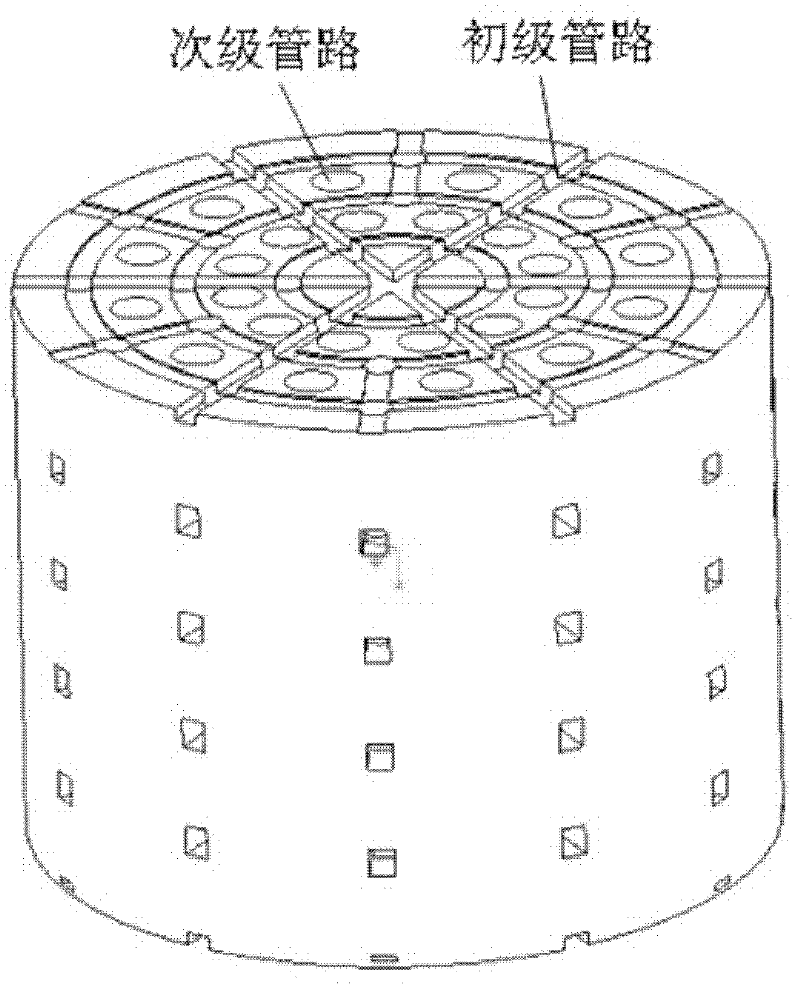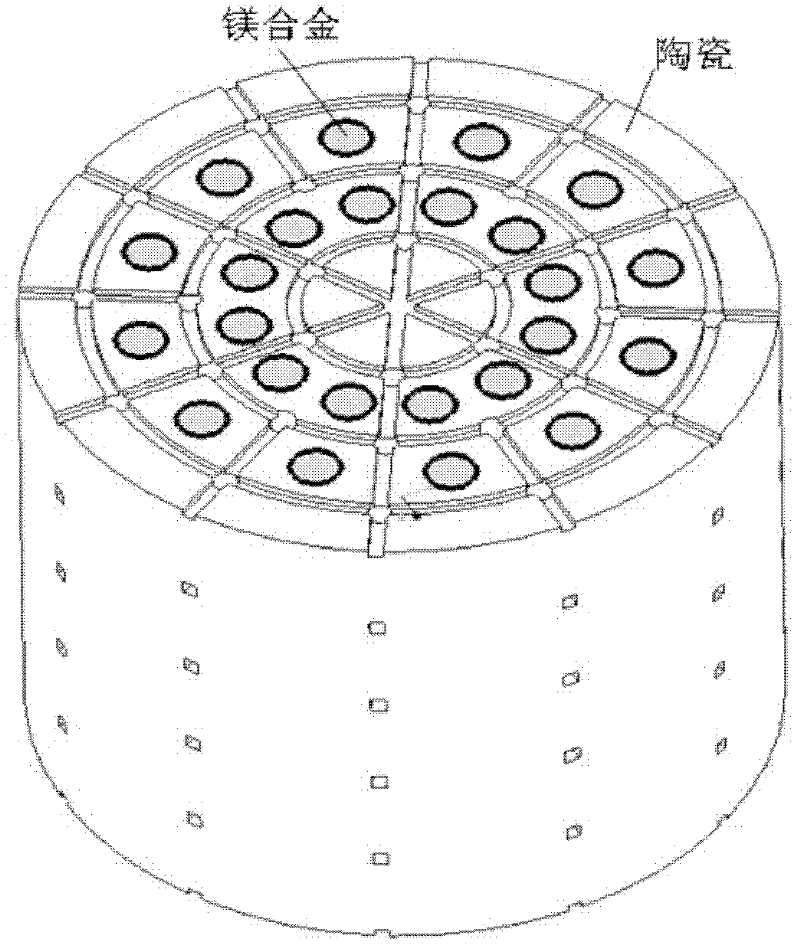Porous magnesium alloy/biological ceramic bionic composite support and quick forming method thereof
A technology of bioceramics and composite scaffolds, applied in bone implants, medical science, prostheses, etc., can solve problems such as the mismatch between the strength degradation rate and the bone reconstruction process, insufficient mechanical strength and stability, etc., to achieve the solution of mechanical strength Insufficient stability and reduced contact area
- Summary
- Abstract
- Description
- Claims
- Application Information
AI Technical Summary
Problems solved by technology
Method used
Image
Examples
Embodiment 1
[0023] 1) Firstly, according to the specific situation of the patient's bone defect site, the shape correlation and microstructure bionic design of the bone defect site are carried out with the help of reverse engineering and CAD technology, and the stress, internal deformation and hydromechanical characteristics of the bracket are analyzed using CAE analysis software. Structurally modified to form a CAD model of a biomimetic scaffold with an internal microstructure of interconnected primary and secondary two-stage pipelines;
[0024] 2) Mix deionized water, glycerin, organic monomer acrylamide, and cross-linking agent N, N-dimethylenebisacrylamide to form a premix, wherein the quality of glycerin accounts for 20% of the total mass of the premix, and the organic monomer The mass of the cross-linking agent and the monomer is 25%, the mass ratio of the cross-linking agent and the monomer is 1:8, and the balance is deionized water. Then, ceramic powder Beta-tricalcium phosphate (β...
Embodiment 2
[0028] Embodiment 2: In this embodiment, the bioceramic slurry is prepared according to the following method, and other steps are the same as in Embodiment 1:
[0029] Mix deionized water, glycerin, organic monomer methyl-acyloxyethyltrimethylammonium chloride, and cross-linking agent N, N-diacetonyl acrylamide to form a premix, wherein the mass of glycerin accounts for the total mass of the premix 20%, the quality of organic monomer accounts for 28%, cross-linking agent and monomer mass ratio are 1: 8, and balance is deionized water, then adds ceramic powder Alpha-tricalcium phosphate (α -TCP) and dispersant ammonium polyacrylate are prepared into ceramic slurry, wherein the volume ratio of the ceramic powder and the premixed liquid is 1: 1, and the dispersant content is 0.3% of the ceramic powder quality, and then poured into the ball mill jar in the ball mill After ball milling for 2 hours, adding a photoinitiator sodium persulfate whose mass is 1% of the mass of the premix...
Embodiment 3
[0030] Embodiment 3: In this embodiment, the bioceramic slurry is prepared according to the following method, and other steps are the same as in Embodiment 1:
[0031] 2) Mix deionized water, glycerin, organic monomer adipate dihydrazide, and cross-linking agent dibenzylidene acetonyl acrylamide to form a premix, wherein the quality of glycerin accounts for 20% of the total mass of the premix, and the organic monomer The mass of the body accounts for 26%, the mass ratio of the cross-linking agent and the monomer is 1:8, and the balance is deionized water, and then the ceramic powder apatite and the dispersant sodium polyacrylate are added batch by batch to the premix to prepare a ceramic slurry Material, wherein the volume ratio of the volume of the ceramic powder and the premixed solution is 1:1, the content of the dispersant is 0.3% of the mass of the ceramic powder, then poured into a ball mill jar and milled on a ball mill for 2 hours, and then added with a mass of 1% of th...
PUM
| Property | Measurement | Unit |
|---|---|---|
| wavelength | aaaaa | aaaaa |
| diameter | aaaaa | aaaaa |
Abstract
Description
Claims
Application Information
 Login to View More
Login to View More - R&D
- Intellectual Property
- Life Sciences
- Materials
- Tech Scout
- Unparalleled Data Quality
- Higher Quality Content
- 60% Fewer Hallucinations
Browse by: Latest US Patents, China's latest patents, Technical Efficacy Thesaurus, Application Domain, Technology Topic, Popular Technical Reports.
© 2025 PatSnap. All rights reserved.Legal|Privacy policy|Modern Slavery Act Transparency Statement|Sitemap|About US| Contact US: help@patsnap.com



